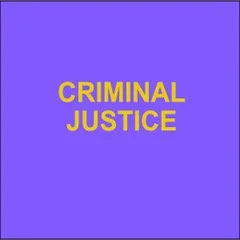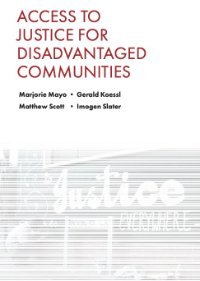By Karin D. Martin
The core of the access-to-justice problem is widespread unmet civil legal needs coupled with general disuse of the civil legal system. This Essay posits that monetary sanctions are an important contributing factor to the problem of access to justice. First, monetary sanctions and the unpaid criminal legal debt they produce are engines of “legal hybridity” in people’s lives in a way that impedes access to justice by generating unmet legal needs. They conflate the criminal and civil legal systems in many people’s lives, thereby reducing access to recourse in either system. Second, by subverting the principles of proportionality, specificity, and finality, monetary sanctions structurally deprive people of just solutions and condition them to not expect justice from legal institutions
widespread disuse of the civil legal system to help solve civil legal problems lies at the core. Regardless of whether the crisis is conceptualized as people having insufficient legal assistance, legal information, or access to civil courts, a through line is the failure of people to make use of the benefits ostensibly available to them through the civil legal system. Here, “access to justice” is conceived of in terms of widespread unmet legal needs with an accompanying paucity of just solutions. Theories about the source of this deficit of just resolutions for people with civil legal problems include lack of legal knowledge and knowhow, underfunded courts, and too few lawyers.cal and structural aspects of monetary sanctions, explained in detail below, this Essay argues that it is time to include monetary sanctions as a contributing factor to the problem of access to justice.
Monetary sanctions are the fines, fees, surcharges, restitution, or any other financial liability imposed in the criminal legal system. Three factors make it easy to overlook the role of these sanctions in the access-to-justice problem: (1) Monetary sanctions originate in the criminal legal system; (2) Some people can pay them without difficulty; and (3) They are a less severe sanction than incarceration. Nevertheless, the ubiquity of monetary sanctions and the unpaid criminal legal debt they produce are engines of “legal hybridity” in people’s lives in a way that harms access to justice by giving rise to unmet legal needs. Specifically, this legal hybridity amplifies the potential for extraction in both the criminal and civil legal systems and hinders the potential for resolution in each. Further, monetary sanctions are structured in a way that violates key principles of justice, which inhibits the pursuit of just solutions. This Essay thus argues that failing to consider the role of monetary sanctions in the access-to-justice crisis will stymie efforts to solve it.
This Essay proceeds as follows. Part I explores how monetary sanctions conflate the criminal and civil legal systems in many people’s lives, thereby reducing access to recourse in either. The idea of legal hybridity is offered as a way to conceptualize this phenomenon. While both the criminal and civil legal systems ostensibly offer remedies for all manner of problems, legal hybridity highlights how they also both have the capacity to be extractive—of time, of money, of property, and of liberty. Monetary sanctions should be a point of focus because they often tilt the balance toward extraction, rather than toward recourse. Part II discusses how monetary sanctions undermine central tenets of justice: proportionality, finality, and specificity in punishment. By subverting these principles, monetary sanctions structurally deprive people of just solutions and condition them to not expect justice from legal institutions. Although these principles are typically of concern in the criminal legal setting, the aforementioned legal hybridity underscores the need to consider them more broadly, particularly in the domain of monetary sanctions.
Stanford Law Review Online , Vol. 75, June 2023, 15p.










